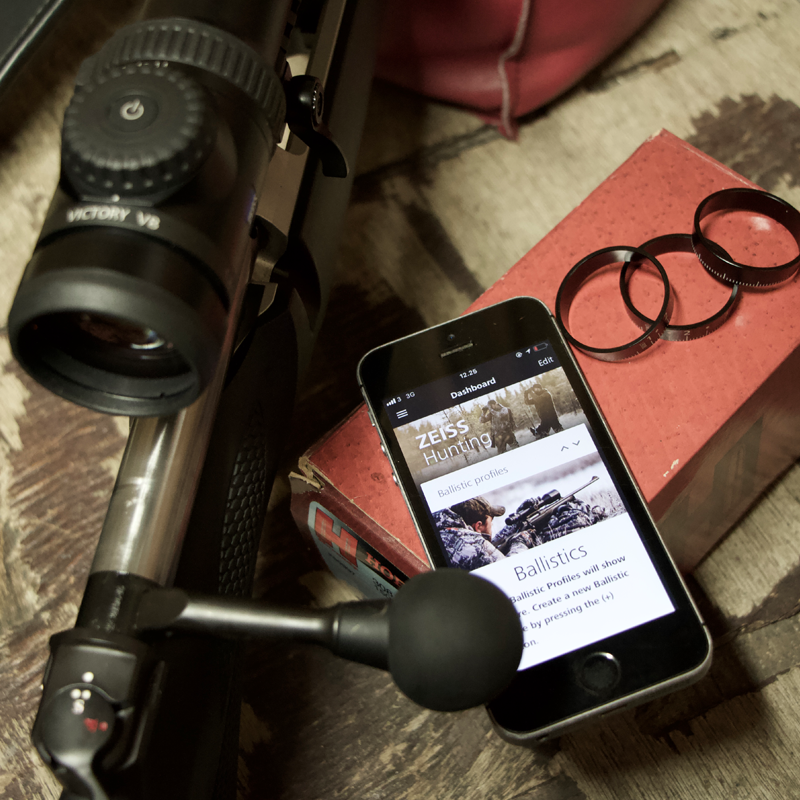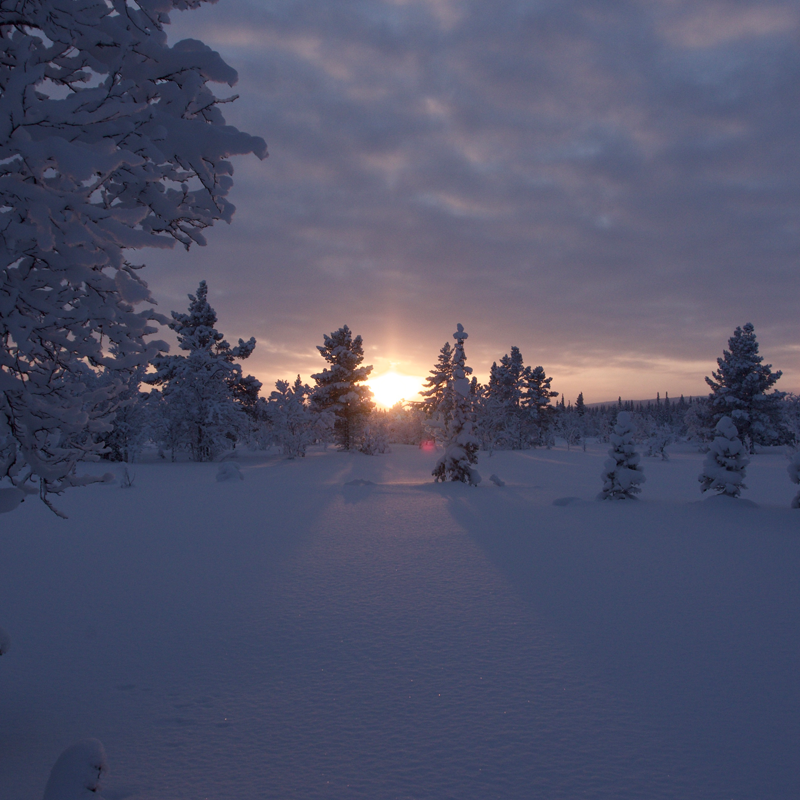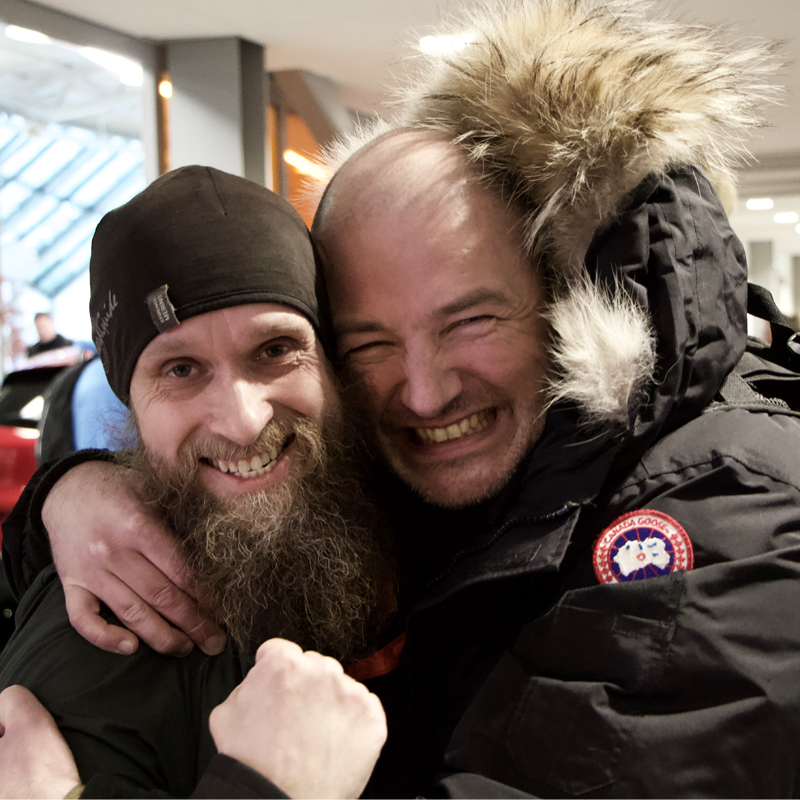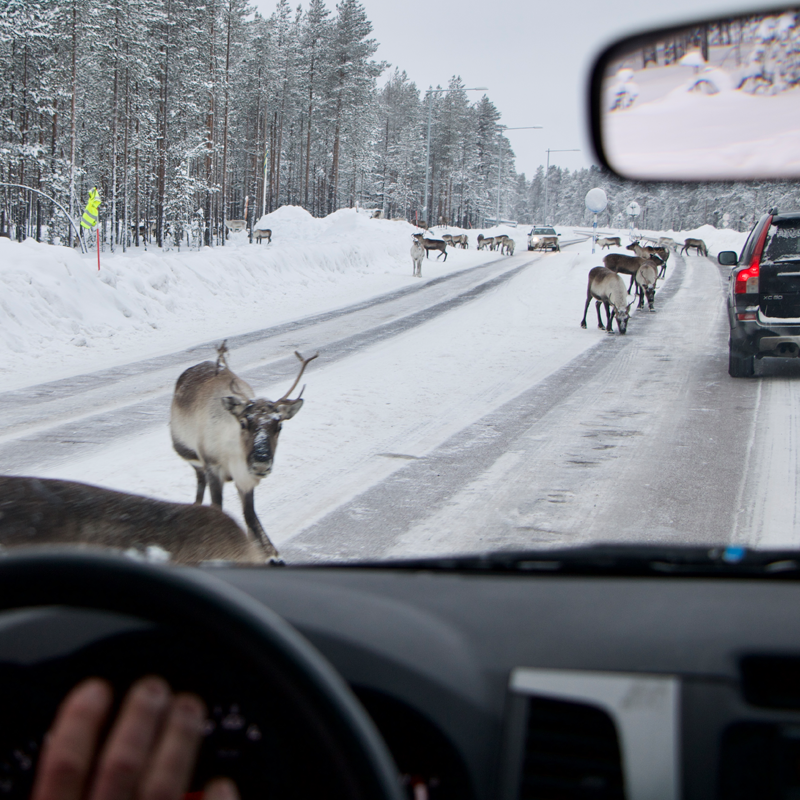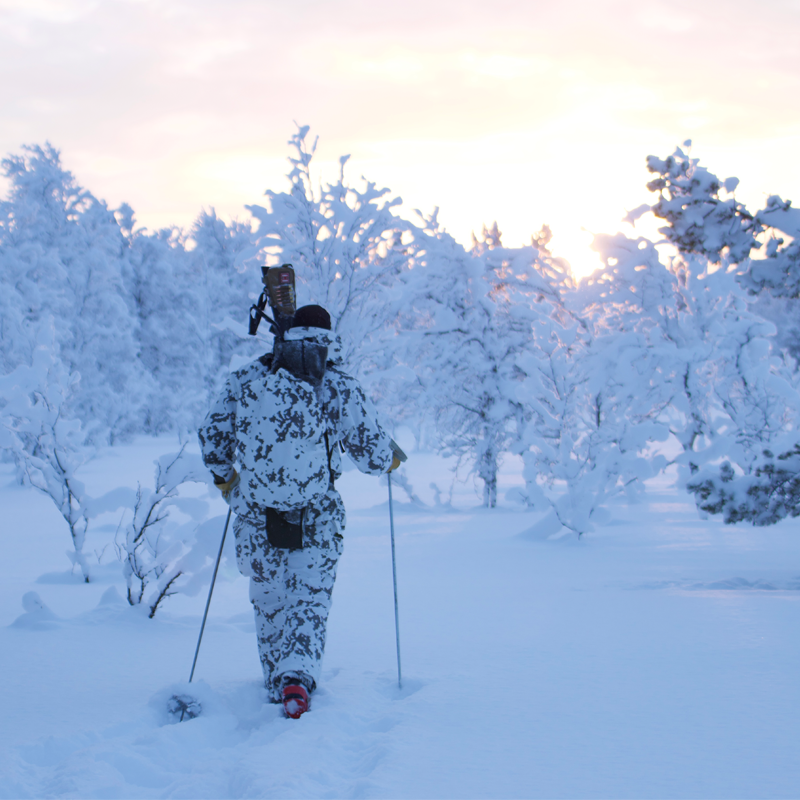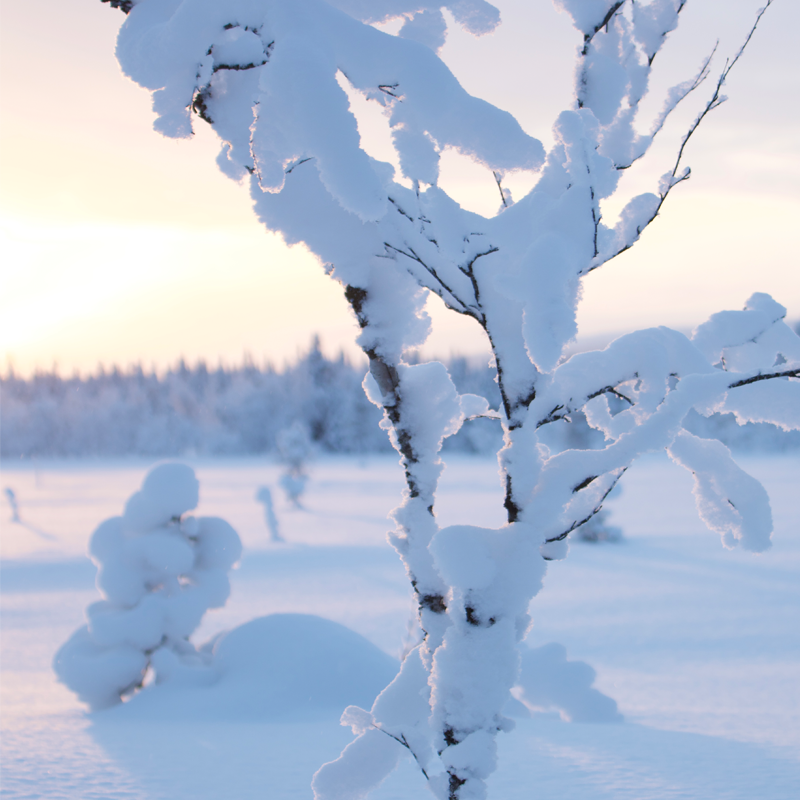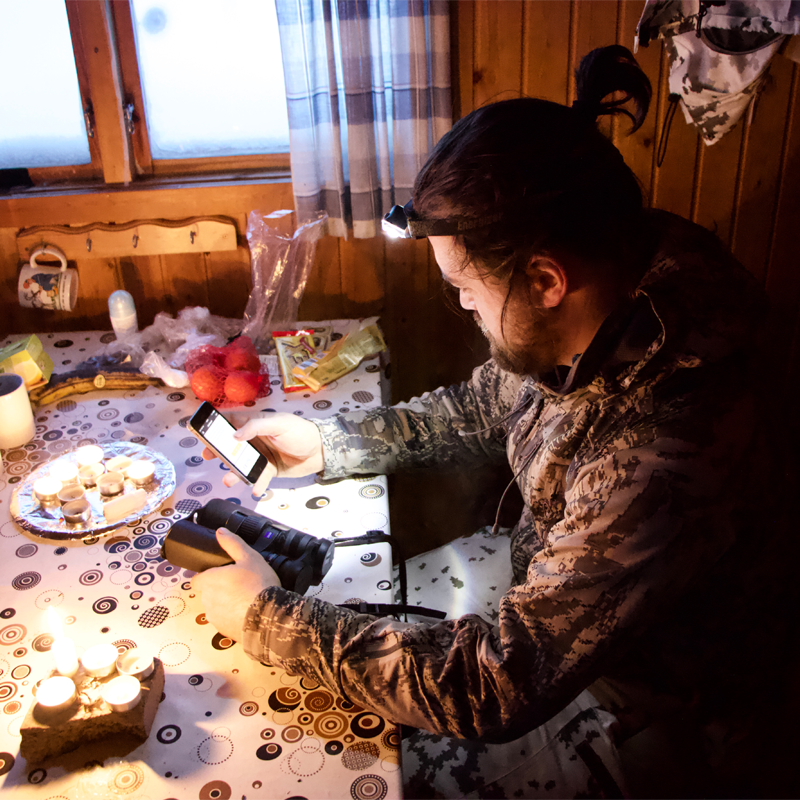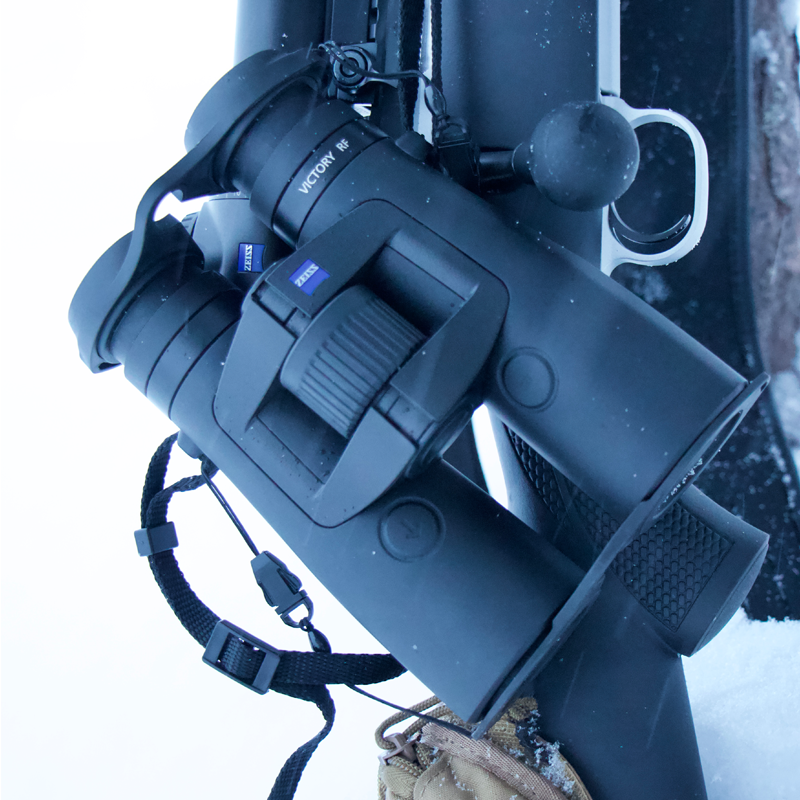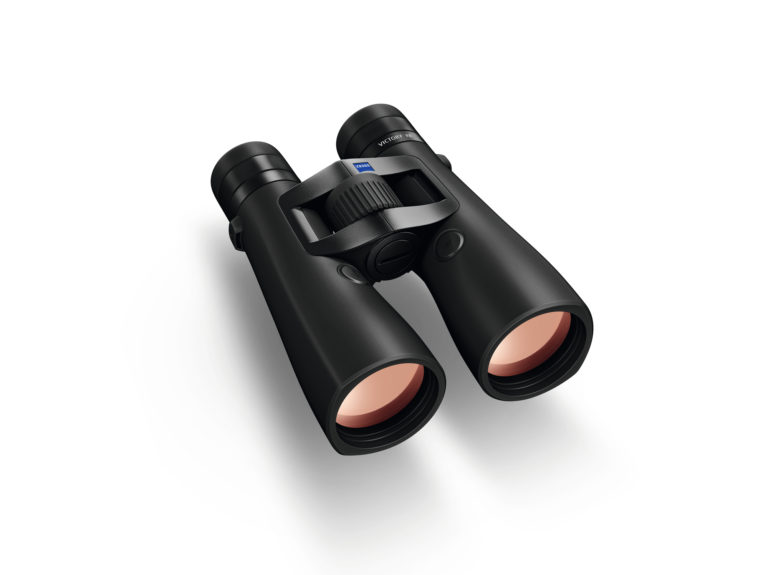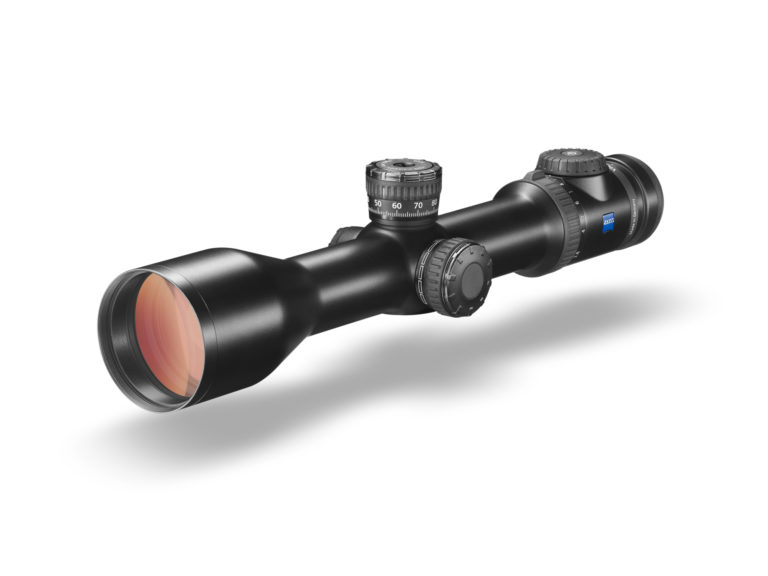In the Heart of the Winter.
A hunting trip for capercaillie to the far north of Scandinavia turns into a journey of self-discovery for ZEISS hunting ambassador David Carsten Pedersen.
“It’s been really good to hunt with you.” The statement came from one of the greatest hunters, I have ever met. The man was Tommy Holmberg, the legendary hunting guide from Swedish Lapland, who had once taken a man-eating bear. We were both lounging besides a small wood stove, tired after some hard and successful days of hunting moose. In the few days we had hunted together, we had become great friends, and his praise meant a great deal more to me, than I think he knew. “But you have to come back for a capercaillie hunt in the winter. That is really something really special. That is where you really get to experience the spirit of Swedish Lapland.” Knowing that I had to go back the next day, I was all ears and wide eyes for more adventures in the future.
“It’s not an easy hunt though.” He said in the long low dialect of the Northern Swedes. “You hunt on wooden skies. Shoot very far. And it can get really cold”. He said this with the same matter-of-factness in his voice, as he talked about everything else. In Lapland, they don’t spend unnecessary amounts of words on anything. So, if Tommy said it was a good hunt, then that’s what it was. And of course, I told him I would be back. At that point Tommy could have told me to crawl inside a bear den and hug a sleeping sow, and I would have done it with a smile. All I could dream about was coming back to this place above the arctic circle, to hunt the royal bird of the woods: The Swedish capercaillie.
It’s is going to be really cold, buddy. You better dial in the right temperatures.
David Carsten Pedersen
A few years later I found myself at the shooting range with my good friend Nikolaj. We were going to visit Tommy in Lapland to hunt capercaillie. And we were expecting some very long shots under extreme temperatures.
Right now, we were discussing the effect that temperatures have on the ballistics of the bullet. “The bullet drops about 0,3 TS for every 20 degrees difference, give and take, so we better take that into consideration” Nikolaj was telling me, while we were setting up the ASW+ for the coming hunt. “And it looks like it’s going to be bloody cold, mate” he said with a smile on his face. The weather forecast predicted, that it would drop to -20 during the day. This would mean at least 30 degrees difference to the relative warm conditions, we were experiencing at the range.
But we had both been to Lapland before, and we were accustomed to hunting under hard conditions. Packing wool and multiple layers of clothes, we were not that worried, that we could keep warm. And after confirming the ballistics in the ZEISS Hunting App, we felt confident, that any shot we were presented with, would be possible to take, even on such a relatively small target as the vitals of a capercaillie presents at long range. The only thing left now was to pack all our stuff and ready for 4 days above the arctic circle.
Welcome back to swedish Lapland, my friends!
The small bald man with the long beard and the big clothes greeted us with a hug, that would fit a bear, the moment we stepped out into the airport in Lulleå. With shining eyes and a broad grin, Tommy Holmberg was every bit as grand, as I remembered him the last time I visited Swedish Lapland. “I don’t know if you checked the weather forecast, boys. But it’s going to be really cold”. He continued in a tone that I hadn’t heard before. Something was up. When we pulled out of the airport in his big Highlux, we drove straight into a traffic jam. A herd of reindeer were blocking the road in front of us. Every car slowed down a crawl, while passing the docile animals.
“I really hope it’s only going to be around -20 C°” Tommy said, in the same voice as before. “But it looks like it’s going to be a lot colder than that. Maybe even -30. We will be lucky if we get one or two birds. But I have to tell you, that we might not see any birds at all”. Driving towards our destination on the frozen highway, we talked a bit about this.
If it was too cold, the birds would not leave their dens to feed in the treetops, but stay under the snow, preserving heat and waiting for warmer days. The only way to spot them was to look for tracks in the snow, breathing holes and middens, and then try to flush them from their burrows. It looked like it would be a couple of hard days on skies. Sitting in the warm car, we had no idea just how hard it would actually get.
Looking for birds in a freezer
We were skiing as quietly as we could trough the frozen landscape. After almost a day on the long wooden skies, finally we had spotted a capercaillie midden under the snow, and tracks of the wings where it had taken to the sky. Now we were trying to find out where it had landed. And maybe even get a shot.
If you haven’t tried hunting capercaillie before, the technique is actually quite simple. You put on some very long wooden skies, with high tips that cuts through the icy top layer on the snow. Then you stalk through the forest, bogs and hills trying to spot the birds when they feed on pine needles. You only hunt for males, spending a lot of time glassing the tree line for their big black silhouettes. When you spot one, you try to stalk into range, making sure the birds don’t see you. The shot is often taken from a lying position in the snow, at ranges from 200 meters and up. This all sounds pretty simple. Until you have to do it in real life.
Unless you are a native to northern Scandinavia, chances are that you won’t have a lot of experience with the ultra-long wooden cross-country skies of the Sami. Combine this with the fact that there is about 1,5 meter powder snow everywhere and you have to cross through thick forest hills and rivers, you start to get an idea of how physical this hunt really is. And then, there is the speed. In order to get a good day’s hunt out of the short time span of the winter daylight, you have to ski hard and fast. After the first 200 meters you start sweating heavily. If you don’t regulate your temperature you will start getting wet, and risk getting hypothermia. Taking off layers of clothes means you have to keep up the pace or risk getting cold again. Taking a rest means putting on clothes. Breaking a binding or even worse, breaking a leg, can result in death. In short, it’s not as easy as it sounds. But we were having a great time.
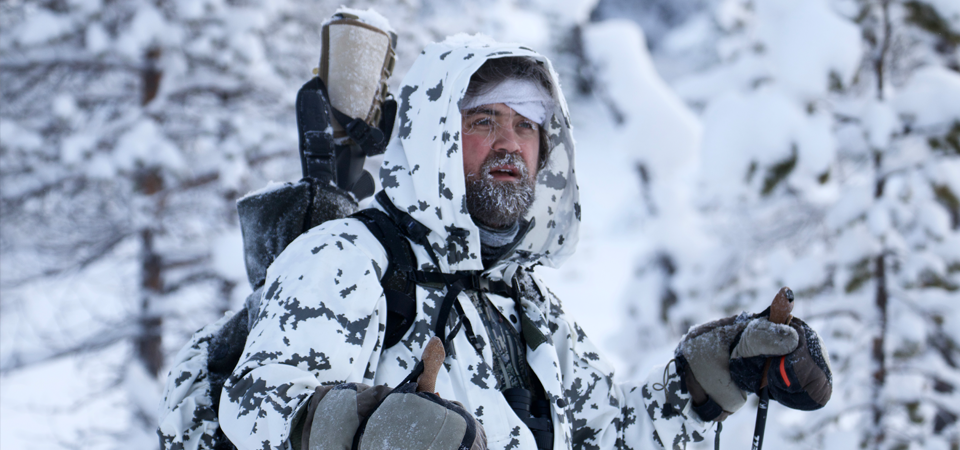
“I think he might have flown that way. If you go left around the bog, I will go right. Signal me if you see something” Tommy proclaimed with the same certainty, that he had been guiding us all day. If there ever was a bird in this vast frozen landscape, he would surely find it. Trusting him completely, Nikolai and glided away through the trees, breaking the surface with a swish. The sun was already going down again, after only a few cold hours in the sky. Stopping later for a snack of nuts and chocolate, we checked our thermometers. It had dropped to – 32. And besides the midden, we had not seen any sign of life.
“I have never been in a place this dead.” I thought to myself as we scanned another tree line, trying to force a bird into existence. It’s as if we are on another planet, a beautiful and dead planet with organic silica in the shape of trees, covered with a thick blanket of snow. Nothing moved. Not even the wind. Everything was frozen and quiet. The only thing of warmth in this gigantic deep freezer, was three men pushing through the snow, into the mountains, towards a bird that might never be there.
When the sun went down on the second day the temperature had dropped to -38. We had been skiing hard the whole day, and now we were sitting on our skies in the snow, eating our meal of hot reindeer soup, and cherishing our big puffy jackets, before heading back on the skies towards the huts. We had not seen anything all day. Not a single living animal. Only the enormous white wasteland of ice and snow. We had at least 7 kilometers off skiing before we were home. This time, the sun would be down and we would be skiing under the lights of our headlamps.
The mood was good, but the temperature was starting to get to me. It was almost physical. A hard cold that stung in the nose when you breathed and sapped the warmth out of everything. Our beards were frozen and we had ice in our eyelashes. Hugging my warm mug of soup, I couldn’t blame the birds for hiding underneath the snow. Anything that moved outside would die. Even Tommy was obviously affected by the cold. We needed to get back on the skies and make our way home.
And that’s when things started to get really serious. It started out with my toes. I’ve always had bad circulation in my feet. So, I’m used to not having any feeling in my toes. But no matter what I did, they could get warm.
I didn’t think about it at first. It just started as a creeping coldness that seeped up through my feet and into my body. Little by little, the cold was everywhere. I couldn’t focus on anything else. It was everywhere. In my mind I knew that I was going home. I just had to keep my head and find a place inside where I could keep warm. And I would be home. So that’s what I did. In the darkness off the winter night, with the moon shinning cold white light over the frozen forest, I reached inside and found a bubble of warmth. It felt as if I left my body and saw myself from the outside. Around me was the feeling of the forest, the hills and the lakes. I knew, I was cold all the way to my bones. But somehow, I was warm. And laughing.

The heart of winter
When we came back to the hut, I almost stumbled through the door. The fire was hot and the food was warm. But no matter what I did, my feet felt like icicles. All my toes where white and the tips of one had started to go blue.
“You are not going out today my friend”, Tommy said in a serious voice. During the night, my toe had started to turn blue. There was no way getting around it. It had frostbite. “You will loose your toe, if you go out” he repeated. Dead-serious. When a man like Tommy tells you not to take risks, you don’t. It’s as simple as that. But as sad as I was to see Nikolai and Tommy leave for another day on the skies, I had a strange smile on my face.
I found something in the darkness the night before. Something that came to me, while I was in my hypothermia-induced trance. Something that was still with me, as I saw them grow ever smaller on their way over the ice. It was the impossible sensation of life, that insists on living, even under the harshest conditions. It was right there. In the mountains and the trees and the sky. What I had found in the frozen tundra of the north was the warmth of life, living in the stillness between a heartbeat, waiting patiently for the spring to thaw its vanes and let life flow back into its limbs. At that moment I felt humbled and blessed to be alive. And as I turned to walk back inside the warm cabin, I couldn’t wait to go back to Lapland again.
